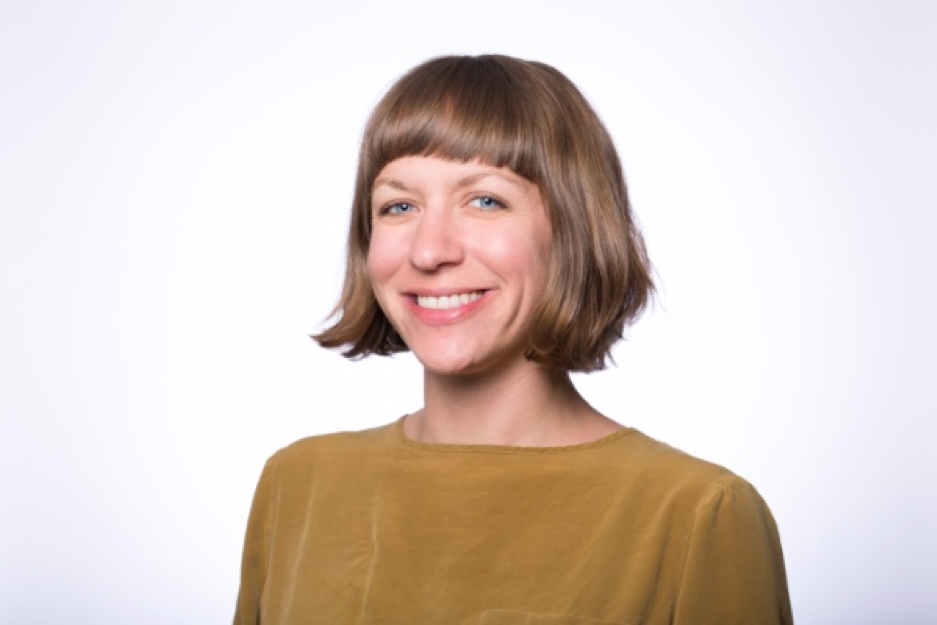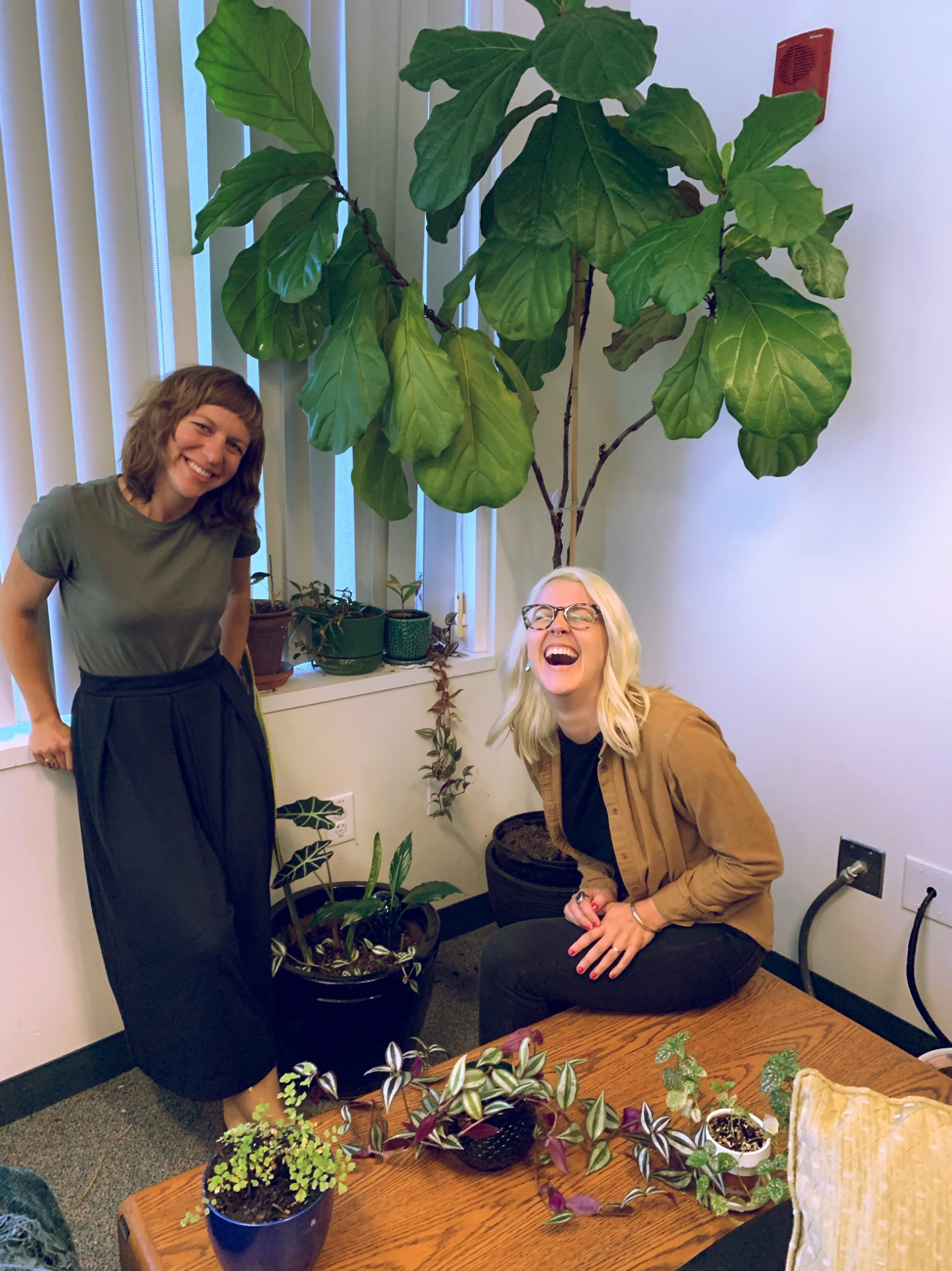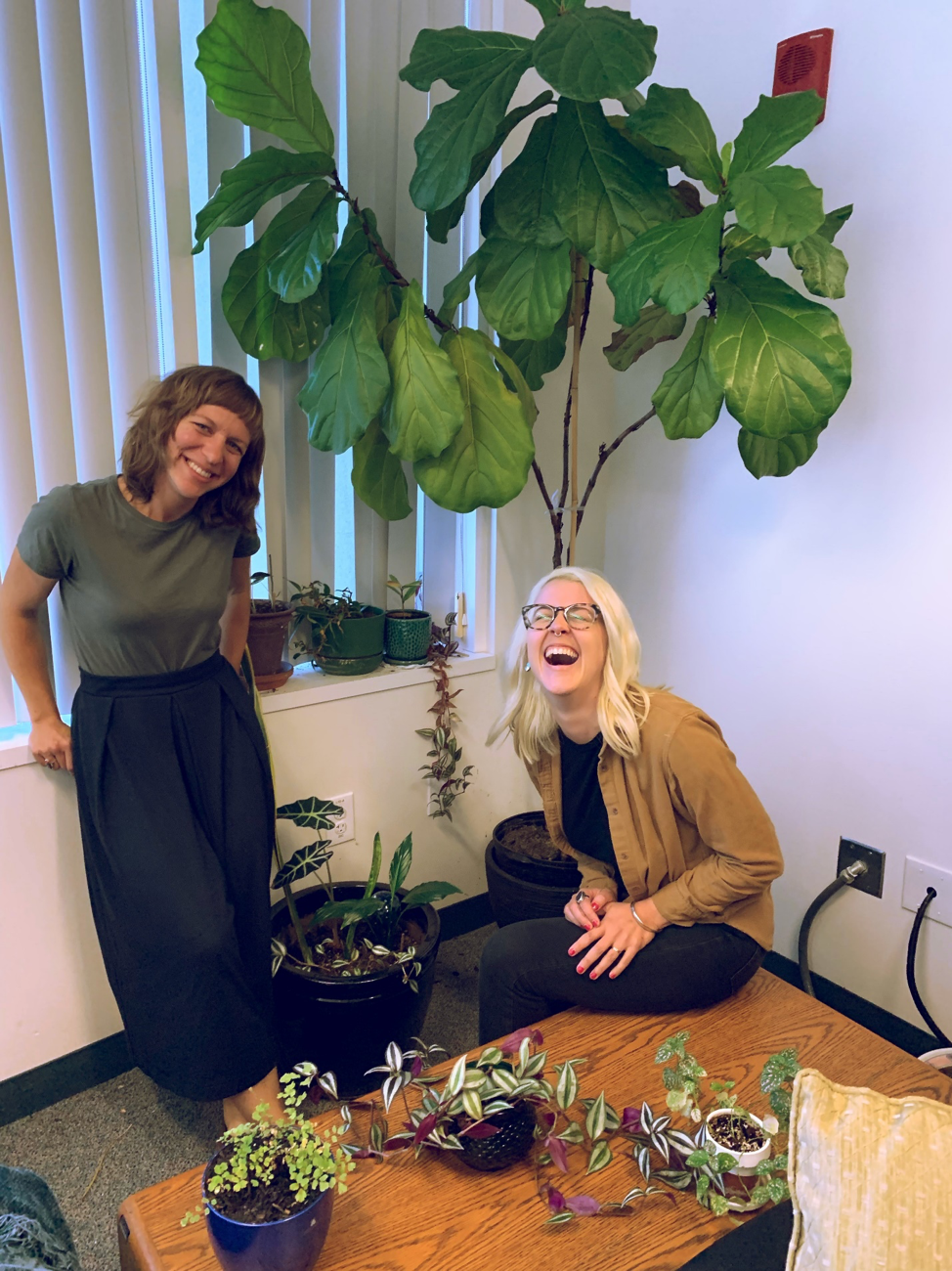Kelly Malinowski and Evyan Sloane completed their California Sea Grant state fellowships at the State Coastal Conservancy in 2014. They both currently work at the State Coastal Conservancy as Project Specialists, where they battle against climate change and sea-level rise while advocating for innovative and equitable nature-based restoration projects across California. As previous fellows, they also serve as femtors (aka female mentors) to newer staff, fellows, and interns.
What is your official title at the State Coastal Conservancy (SCC)?
Kelly Malinowski (KM): Climate Project Specialist.

Evyan Sloane (ES): Project Specialist and Manager of the Southern California Wetlands Recovery Project (SCWRP).

Ok, now what would be your non-official superhero title?
KM: Climate Justice Warrior Queen!
ES: Living Shorelines Legend!
What does your ideal day at work look like?
KM: An ideal day for me would be: working with grantees to solve project issues, visiting project sites, coordinating with regional partners on climate strategies, and giving money to climate resiliency projects.
ES: An ideal day for me would be: talking with local jurisdictions about climate stressors, working together to develop novel solutions and projects to address those stressors, convening academic and government scientists for the purpose of grounding restoration projects in science, and giving a talk at a local workshop or conference about pilot projects focused on novel natural infrastructure for sea-level rise adaptation.
Why are you so passionate about your work?
KM: I really care about the people of California. I especially want to protect the most vulnerable communities. I truly believe that we will have the ability to mitigate climate change using natural systems, while building a better way of living that’s more green and equitable.
ES: When it comes to fighting against climate change, I advocate for using a variety of solutions on the green to gray scale (from more natural and green based adaptation strategies to more man-made hard gray infrastructure). There are areas where we could be adding resiliency with purely green strategies but we need to test their efficiencies using pilot studies first. Our landscape could look completely different if we included a wide range of adaptation strategies, including new tools currently being developed by scientists and engineers.
What do you think are the biggest hurdles your work faces? What are some of the greatest accomplishments you have had at SCC?
KM: One big hurdle for the San Francisco Bay region was getting restoration projects funded. However, with the creation and implementation of the San Francisco Bay Restoration Authority (SFBRA) through the Measure AA parcel tax, we as a program were able to offer a more stable source of funding for Bay Area wetlands restoration.
Another big hurdle for restoration work is the permitting process. The San Francisco Bay Restoration Regulatory Integration Team is working now to improve the permitting process to be as efficient as possible.
Finally updating the restoration goals updated for climate change in the Bay Area was another example of a huge hurdle we worked tirelessly on to overcome. We’ve now done this with the Baylands Ecosystem Habitat Goals Update, and the recent Adaptation Atlas that builds on this.
I would say that overcoming these big hurdles were actually some of our greatest accomplishments, and I got to play a big part in the Measure AA work.
One current challenge we have now is getting community based projects funded.
ES: The challenges we have in the South Coast region of California are very similar to the ones in the Bay Area: funding sources and trying to streamline permitting. The SCWRP’s Regional Strategy 2018 found that projects need to be in the ground by the year 2030, that means restoration needs to be happening now!
One major accomplishment for me was developing the Regional Strategy 2018 for SCWRP. It’s the first report of its kind to have quantifiable restoration objectives listed as acres for wetland habitat types. This report was developed by a group of expert wetland scientists using tools such as a site-specific sea-level rise model and maps.
Why did you select SCC as your fellowship agency?
KM: I chose SCC as my fellowship agency because I had heard about the work SCC Project Manager, Marilyn Latta, was doing on living shorelines. She was actually getting projects in the ground to test natural-based adaptation!
ES: SCC had actually previously funded my work on carbon sequestration in tidal wetlands in San Francisco Bay. It was important to me that my fellowship agency genuinely cared about science to base their work off of.
How do you feel your fellowship shaped your career trajectory?
KM: During my term as an SCC Climate Ready Fellow, I developed the Climate Ready Grant program and informational material that I presented to potential grantees. Now in my role as a Climate Specialist, most of my work is still based around climate change. I’ve administered four different types of Climate Ready grant programs in my time here at SCC: Climate Ready, SFBRA/Measure AA, Marin County Foundation, and Proposition 68 for the Bay Area.
ES: Prior to my fellowship, I had been considering going down the academia route. I decided to try out working in government because I wanted to be a part of the real change while still applying science to my work. I had a lot of freedom and support during my fellowship. I worked on the Seal Beach Sediment Augmentation project, which really showed me that I could use my science background to contribute to the project design, apply to grant programs, convene scientific advisory teams, and design monitoring programs.
What has it meant to you to have California Sea Grant alumni in your network?
KM: Sea Grant is an amazing network, the California Sea Grant state fellowship helps to strengthen working relationships with people at other agencies as well as within SCC. When I first started as staff here at SCC, it was nice to have people around who had also done the same fellowship. Now, it’s our turn to see newer fellows carry on after us and continue.
ES: It’s always nice to have a cohort of Sea Grant fellows to run into at conferences or workshops. You have a connection and share a common ground with other Sea Grant alumni. Working literally side by side with Kelly has been great also, she’s been my climate encyclopedia over the years.
KM: Evyan is my living shorelines encyclopedia!

In this field, you can get overwhelmed by looming climate change and politics. What gets you through a particularly dreary day?
KM: I always try to remember to practice self-care and put my wellness first. I would say to not be afraid of leaning on your network of fellow climate workers.
ES: Doing yoga, riding my bike, and spending time with my babies (both of the human and dog variety).
Finally, do you have any advice for current or future fellows?
KM: To future fellows, aim for a fellowship based on your passion, even if that agency is not hiring at that time. Also, NETWORK. Don’t be afraid to ask around for job opportunities.
ES: My advice would be to try to work at a variety of sectors before deciding on your career path. That could be interacting with people from different sectors at meetings or phone calls during your fellowship year.
Interview conducted and edited by Alexis Barrera (State Coastal Conservancy Coastal Restoration Fellow 2019), interview format inspired by Tayler Tharaldson (California Sea Grant Science Communications Fellow 2019).




